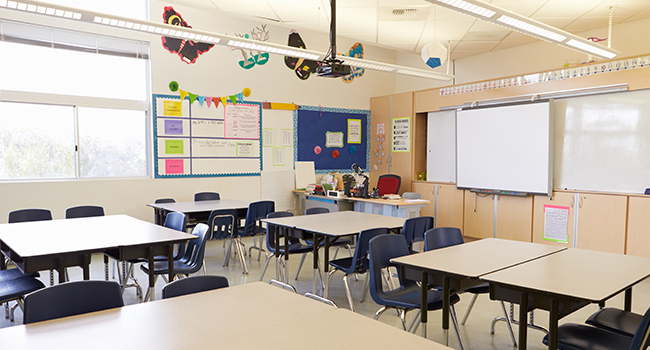
Arkansas District Adds Safe Rooms for Classroom Safety
The cubes have been designed and tested to withstand the force of tornadoes with wind speeds of 261-318 mph. Quitman officials maximized the protection the cubes could offer by adding Ballistic Level III military-grade steel, which can resist rounds from semi-automatic weapons.
- By Jessica Davis
- January 24, 2019
Quitman School District has installed combination tornado shelter/safe rooms in all 53 of its classrooms as part of a school safety plan.
According to Superintendent Dennis Truxler, the district added the safe rooms to classrooms to protect students from tornadoes and the threat of an active shooter situation on campus. Installing all the safe rooms cost almost $1 million.
"I am buying an insurance policy," Truxler told the Northwest Arkansas Democrat Gazette. "This isn't a guarantee nobody will get hurt, but it will limit it. School is supposed to be a safe place, you know."
Each cube is 34 inches wide from the wall, and the length of the cube depends on the size of the classroom and the number of students in that class. In the cafeteria and gym, the structures are larger—the cafeteria structure can hold more than 200 children.
The inside of the safe rooms varies in size. The elementary school shelters have enough room for students to sit down, but the high school shelters appear to only allow for standing.
The cubes have been designed and tested to withstand the force of tornadoes with wind speeds of 261-318 mph. They can also be upgraded to be bullet-resistant. Quitman officials maximized the protection the cubes could offer by adding Ballistic Level III military-grade steel, which can resist rounds from semi-automatic weapons.
"This [steel] is used on armored vehicles," Truxler said. "In this day and time, it seemed like a good idea to install a ballistic shield."
According to Truxler, there was plenty of space in the district’s classrooms for the shelters, which can come in a variety of shapes. The shelters have protected air holes on the front, and doors can be opened from the outside or inside. Teachers have been given steel pins that allow them to lock the doors from the inside.
"A couple of days ago I asked a student to try it out," Truxler said. "He had the door open in seconds, and in less than two minutes we had 25 kids in there with the doors locked."
Truxler said outside noise can be heard inside of the cubes, meaning teachers and students could hear an all-clear sign given via the school’s intercom or in person. Cellphones also work inside the shelters.
"Every time I hear about a school shooting, I lie awake at night thinking, 'What if that was our students? What if that was our staff?'" Quitman first grade teacher Kathy Brantley said.
Brantley said she talked with her students about the new shelter in their classroom, telling them it was a safe place to shelter during storms. She chose not to tell them that the safe room could protect them if an active shooter came to campus.
"I never want to use it, but I am glad to have it," Brantley said. "I feel much more at ease."
About the Author
Jessica Davis is the Associate Content Editor for 1105 Media.